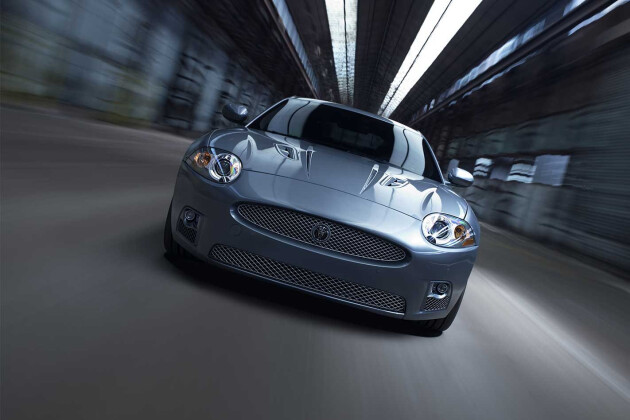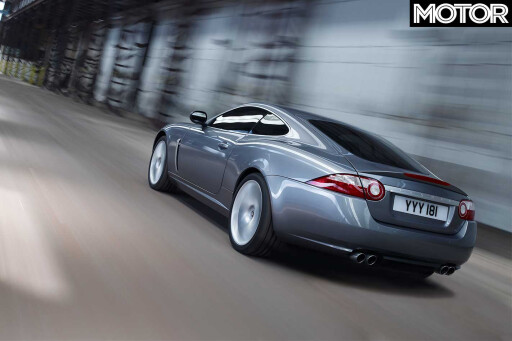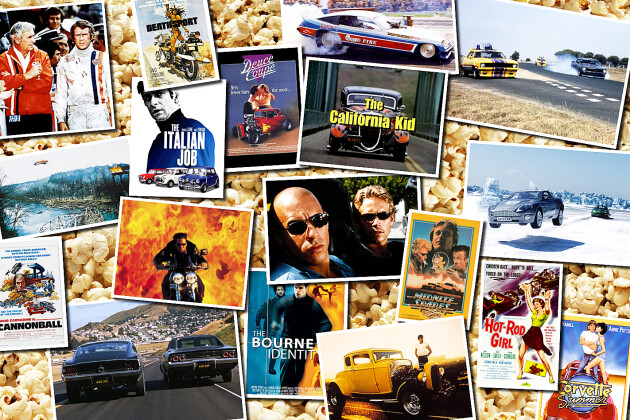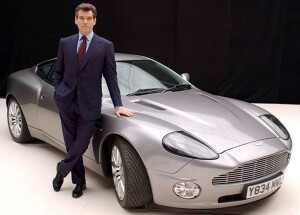Latest Review

2006 Jaguar XKR review: classic MOTOR
Flashback to the big cat that gave Jaguar back its claws
Across the ancient stone bridge that’s seen everything from medieval knights to bring-out-yer-dead peasant wagons, a brushed paddle snaps the XKR up another gear, and the coupe’s chassis responds.
This review was originally published in MOTOR’s December 2006 issue
It squats harder, in fourth gear now, driving its outside rear wheel into the smooth, Spanish hotmix with the front Dunlops howling to leave a ghostly wake. A series of small bumps are feeding up through the seat without alarming anybody and the ESP light remains stoically invisible.
 But it’s the supercharged V8 that’s stealing the show. As the throttle extends beyond three-quarter travel, the organic, silken howl of the XKR is joined by the high-pitched, screaming whine of the supercharger shoving air down the V8’s throat. The whole concert then amplifies back off the cliffs and carved stone tunnels.
But it’s the supercharged V8 that’s stealing the show. As the throttle extends beyond three-quarter travel, the organic, silken howl of the XKR is joined by the high-pitched, screaming whine of the supercharger shoving air down the V8’s throat. The whole concert then amplifies back off the cliffs and carved stone tunnels.
If the new XK has been the car that’s finally given beleaguered Jaguar something to smile about, then the XKR is the one to give the marque the muscle to go picking fights with everything from M6 Bimmers to screwed Benzes. And it'll win more fights than it loses.
Aimed somewhere between a hardcore sports car and a traditional grand tourer, the XKR is simply one of the best ride, handling, grip and grunt packages out there. And it looks hot.
Initially a little generic, the more time you spend in its company, the more you appreciate its nuance and craftsmanship – like its vented bonnet, brake duct inlet openings and aluminium mesh grille. The long-nose, short-tail thing’s been done before, but it’s not normally done this well.
That grille hides an engine that delivers a rare combination of thumping, all-pervading low-rev torque and a willingness to spin hard to its redline. It achieves all of this in a shrieking, demonic howl that begins the instant you drive the pedal beyond about three-quarter throttle, regardless of revs.
The XKR's updated supercharged engine now pushes out 560Nm of torque and 313kW of power, so it’s nobody’s pushover – especially with an all-aluminium chassis and body 19 percent lighter than the old XKR’s shell. Even brimmed with mod cons, the new R tips the scales at just 1665kg.
There’s a school of thought (that I happen to be a part of) that there’s no forgiving a car like this for heading towards 1.7 tonnes. But the XKR is 45kg lighter than the steel/aluminium M6 and several hundred kilos lighter than steel-chassised grand tourers like the big Benz coupes, let alone a 2.3 tonne Bentley Continental.
So while the XKR is 60-odd kilowatts shy of an M6, it’ll still bellow to 100km/h in an even five seconds and, being automatic, it’ll do it all day, every day – not just once every couple of hours. Neither will it ask you to juggle wheelspin by feathering the throttle and fiddling the clutch.
In fact, at odds with our very MOTORness, the six-speed auto is one of the highlights of a car so integrated that few things stand out from such a complete package. It is simply not possible to upset it and generate shift shock out of its innards. It isn’t possible to miss a shift, either, and it’s even got a properly masculine downshift blip every time you pull the left paddle to grab a lower cog.
It’s impressive in the way the transmission hides its automatic past and promotes an instant, manual feel. And it’s not just hardware. You can be flitting along at around 210km/h (or 4500rpm) and downshift into fourth at 6000rpm – which is just 250 revs shy of the on-the-limit shift point!
This rarest of autos will bait you into dipping into the well and fiddling through the cogs just for the fun of it, just like the very best manual boxes do. It also helps with the unfussed, serene speed the thing can punch out.
The XKR's chassis is a brilliant piece of work, too. While the steering’s lack of heft and low levels of feedback can take some familiarity, the rest of the car is instantly comfortable and instantly rewarding. It’s that rare package that neither bores you, nor wears you out.
Initially, it’s the steering that seems to detract from everything else, and you tend to hear the onset of understeer first, then feel it through the seat if you push further, and then finally, the light steering trends lighter.
But a couple of hundred kays convinces you that this is actually in keeping with the Grand Touring aims of Jaguar. It kind of fits after a while, especially when the chassis can successfully walk the fine line between security and entertainment at the rear end.
Its ESP will allow a bit of angle in low-speed corners, and it’s subtle when it finally does chirp up in disturbance. That doesn’t happen often, because the XKR’s ability to put its urge to the road belies its 53 percent front weight distribution, especially when you’ve got it pinned in cresty corner country.
Mid-corner bumps don’t shake the XKR's commitment either, and while the ride quality seems pretty firm to start with, it’s more noise than actual vertical cabin movement and it’s not bad for a car riding on 19- or 20-inch boots.
It doesn’t have that wonderful Porsche quality of supply oozing into every scrap of road, but then it’s not a direct Porsche competitor, and neither does it have a Porsche’s weight distribution.
The XKR is also disturbingly easy on its tyres and the speed it generated during the launch came without even the slightest feathering of the fronts, much less the chunking we’ve seen with a lot of powerful front-engined thumpers.
The interior is perhaps a let down, though, with the bland expanse of space in front of the passenger at stark odds with the classiness of the array in the driver's eye line. The seats, are grippy (well the front ones are – the rears are a giggle), but you’d wonder at their big-mile ability.
Curiously, though, the chassis balance is so good that the power never seems intrusive and the torque never threatens to overwhelm it. Spend a few hours flinging it through the hills – even with its traction control switched off – and it feels like it could use another 100 or so of either number. Maybe more.
All this integration, all this speed and all this grace makes it clear that Jaguar has kicked two consecutive goals now. The XK is good, the XKR is fantastic, and Jag reckons it’ll sell more XKRs than it does the cheaper, slower XK. And they bloody well should.
FAST FACTS
2006 Jaguar XKR coupe
BODY: 2-door, 2+2 coupe
DRIVE: rear-wheel
ENGINE: 4196cc V8, DOHC, 32-valve, supercharger
POWER: 313kW @ 6250rpm
TORQUE: 560Nm @ 4000rpm
BORE/STROKE: 86.0mm x 90.3mm
WEIGHT: 1665kg
POWER-TO-WEIGHT: 188kW/tonne
TRANSMISSION: 6-speed automatic
0-100KM/H: 5.2sec (claimed)
0-400M: 13.3sec (claimed)
TOP SPEED: 250km/h (limited)
SUSPENSION: double A-arms, coils, adaptive dampers, anti-roll bar (f), multi-links, coils, adaptive dampers, anti-roll bar (r)
L/W/H: 4791/1892/1322mm
WHEELBASE: 2752mm
BRAKES: ventilated discs – 355mm (f), 326mm (r); ABS, EBD, BA
WHEELS: 20-inch alloys
TYRES: 255/35 ZR20 (f), 285/30 ZR20 (r)
FUEL: 71.1 litre tank/98 octane
PRICE: $220,000 (est in 2006)
Not so Grand a Tourer
The XKR's fuel range is really the Jag’s only bugbear as a grand tourer. The tank swallows just 71 litres and, with the supercharger on song on our test drive, it was only good for about 320km. Jaguar denies it's a major problem – claiming a fuel range to match the M6 and SL55 AMG – but MOTOR begs to differ.
On a full-noise blast across Germany, it’s difficult to imagine more than about 250km. Ford of Europe road-tester supreme, Richard Parry-Jones, agrees. He discovered the same thing driving the mule he tests regularly, and almost ran out of fuel on a run from Scotland to Wales.
The fix, he reckons, is not embiggening the fuel tank, but upping the temperature the catalytic converters can cope with. For every 100 degrees the survivable temperature goes up, the less raw fuel you have to pump through them on full throttle to keep them alive. So the strategy is to work on the full-throttle fuel consumption, rather than tackling the trickier task of packaging a bigger tank.
Soft Top
As rag-tops go, the XKR is bloody sexy. As stirring drives go, it’s a notably paler imitation of its encapsulated brother. The coupe needs 29,000Nm of body twist to produce one degree of flexing, but the convertible only 16,000Nm, and shows in the way it drives.
Even with reinforcement below decks, it still suffers whenever you generate x-rated levels of cornering force or strike any sort of square-edged bump. Where the coupe’s steering wants for feedback, the convertible’s is riddled with it – and not always good. It's forever nibbling at your hands and wriggling at the road’s inputs.
Stiffened seat mountings over the coupe make sure you’re still feeling one with the car, but that’s not enough. It’s sexy and it’s good, but it’s not much more than a dead-ahead Fred cruiser. At least you can put the roof up or down at 20km/h!
Honesty 101
Both the coupe and convertible feature an old-school antenna that rises electronically out of the right rear quarter panel. While most competitors now use an antenna in the front windscreen (BMW’s rear roof fins are for something else), Jaguar believes that’s no good for AM reception, which is big business in the US.
Still, it’s a low-rent look, and Chief Body Engineer Paul White agrees: “It’s crap. I know. We’re working on it,” he said.
News
-
 Features
FeaturesBest Car Movies
Street Machine counts down some of the best car movies. What's your favourite?
-
 Features
FeaturesUsed V8s and V10s galore: Classifieds of the Week
There’s no replacement for displacement in this week’s round up of ads
-
 News
NewsJames Bond's car collection could be yours
A selection of 59 James Bond vehicles is up for grabs – yours for just $37 million
-
 News
NewsJaguar's biggest, baddest cat unleashed
The hunt for Editor Corby's next long term test car is over.
-

Jaguar XKR-S GT rewrites performance history




